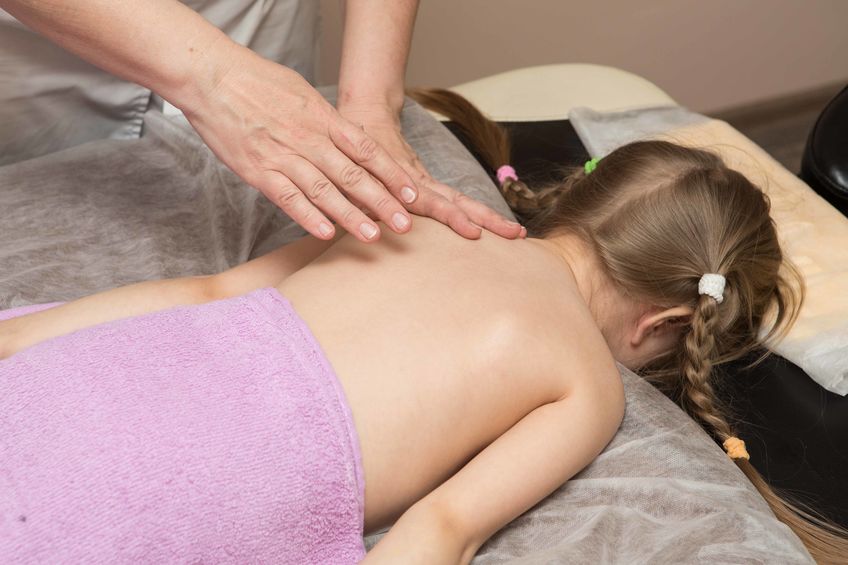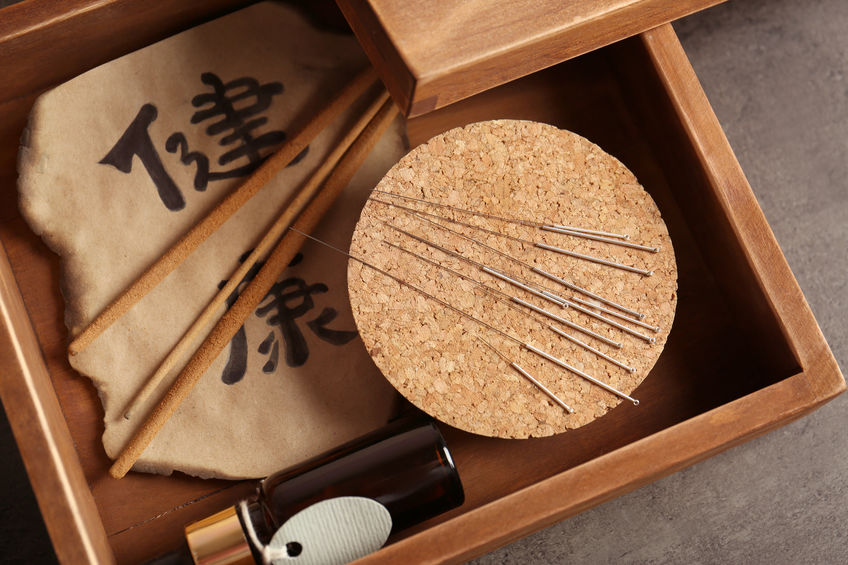Idiopathic Scoliosis Pain Management
Are you taking your child or teen for physical therapy for their idiopathic scoliosis, or is your child or teen going through brace therapy and along with these methods, he or she is experiencing back pain? Are there any effective pain management treatments out there to help your child or teen get through their therapies more easily and pleasantly?
Children with moderate idiopathic scoliosis (curves between 25 to 45 degrees) are generally treated with typical brace therapy. As the child grows, the brace will keep the spine in a straight position. Sometimes along with this therapy, the child or teen will experience pain which is sometimes due to the tenseness to the back muscles caused by wearing the brace.
Sometimes the curvature of the spine can stretch or squish the nerves causing irritation. Joints can become strained, causing them to become inflamed and worn. Muscles become tired and there is a lack of brain to body communication. The brain does not realize that the body’s posture is not aligned properly. The child’s brain fails to instruct the muscles to repair the curve causing crooked back growth and pain.
Medication for Scoliosis
The most common pain relievers are called NSAIDS, which are non-steroidal anti-inflammatory medications. These are used only for pain relief and not to cure the curvature of the spine.

They must be used in conjunction with other therapies such as bracing and/ or physical therapy. There is an enzyme that is produced by the body that causes inflammation but is helping the body heal from the therapy. At the same time there can be a lot of pain that goes with it. NSAID drugs block the enzymes and reduce the chemical, prostaglandin, throughout the body.
Some examples of these drugs are, Aspirin, Motrin, and Advil, which can be purchased over the counter. Then, there is a class of prescription drugs such as but not limited to Celebrex, Zorvolex, Indocin, Naproxen, Oxaprozin and Piroxicam. These can only be taken for a limited amount of time since there are side effects. The disadvantage of using these types of drugs is that they reduce prostaglandin, which protects the stomach from the damaging effects of acid and can cause stomach ulcers.
Another group of drugs are called tricyclicantidepressants. These have a direct impact on both pain and mood. Some examples of this group are, Diazepam and Amitriptyline. These drugs can be addictive long term, so they are not prescribed in most pain management clinics.

Scoliosis Massage
Patterns of body compensation in scoliosis therapy can cause muscle spasms which can be helped by massage therapy. A report published by the Journal of Bodywork and Movement Therapies, concurred on the positive effects of a massage twice a week for eight weeks. Both sleeping and general mobility of the scoliosis patient improved over the course of this treatment regimen. There are several recommended types of massage techniques that can be helpful for scoliosis patients.
1) Cranial Sacral Therapy – decreases stress and releases the tension in joints and muscles which improves elasticity and decreases stiffness.
2) Swedish Massage – is a light-handed type of relaxing massage which strengthens the immune system.
3) Deep Tissue Massage – intense pressure to loosen tight muscles and bolster blood circulation.
Yoga for Scoliosis
Elise Browning Miller is a well-known yoga teacher who works with scoliosis patients specifically. Elise herself had a severe Cobb curve of forty-nine degrees which is often treated with surgery. She reduced her curve to thirty-two degrees through her yoga practice. Yoga could be quite helpful in children and teens if they would have the patience for it. Yoga is a slow-moving vehicle for exercise and although adults find it relaxing and comforting, it may be too slow paced for the child and teen age groups.
Spinal Injections for Scoliosis
There are two types of injections to alleviate the pain of scoliosis in the nerves and joints.
1) Steroids are injected to serve as short term relief for acute pain. (Steroids include drugs used to relieve swelling and inflammation, such as prednisone and cortisone). These injections do seem to be helpful for patients, however, for people with scoliosis, which is a long-term condition, the relief eventually will wear off. When a person has a repeat of injections, the positive effect seems to lessen over time. Injections are used moderately by medical practitioners, since nerve damage, although infrequent, can be a possible side effect.
2) Spinal Cord Stimulation is the treatment where electrical wires are placed along the back. A small stimulator box is attached to the wires which are buried beneath the skin and are stimulated by remote control.
Acupressure and Acupuncture for Scoliosis
Acupressure and acupuncture are similar in the meaning and practical relief that they both give. The way the pressure points are assessed and selected are identical, only the tools that are used are different. An acupressurist uses her fingertips and hands and the acupuncturist uses special extremely thin needles for her craft.
Acupressure – The term pressure is deluding since this treatment mostly uses an exceptionally light touch. The correct location of the pressure point is more important than the amount of pressure. An acupressure practitioner will adjust the level of pressure depending on the person’s needs and preferences. For example, some people with tight muscles want strong pressure and others prefer light pressure. The benefits of this treatment have nothing to do with the amount of pressure, but with the accuracy of the practitioner’s finding the correct points.
Acupressure tries to balance the body’s energy. The body’s internal organs are connected to the external organs (muscles, flesh, and bones). Electric point finders can accurately locate the right pressure points. Energy and blood are closely related in Chinese medicine. When the practitioner feels a pulse under her finger, she will release the pressure. Increased blood flow to the surface causes the location to pulse. The indicator of effectiveness is the increase in the pulse which confirms that positive energy is now flowing.

There are different ways for the acupressurist to find twelve major energy channels. She can use mental indicators called tools to determine where to press. Some of these tools are, looking at the patient, checking his or her pulse, inspecting the tongue and questioning the patient. One of the responses that the practitioner is looking for is relaxation, so she will often start by using her hands with a massage called, Tui Na. This massage at the start of treatment prepares the body and increases the effectiveness of the accupressure.
Acupuncture – Dr. Teresa Shen is an acupuncturist in California, who specializes in relieving scoliosis related pain. She explains that a person gets used to putting up with so much pain that the relief they feel is so enormous both, physically and emotionally, when that pain is abated.
While undergoing Dr. Shen’s acupuncture treatment, her patients become so relaxed that they sometimes fall asleep during their treatment. This is far cry from what one would think would be the result of being poked with needles! As with acupressure, acupuncture opens the blocks all along the patient’s spine which increases the blood flow throughout the body. With the body’s metabolism regulated, the body finally can heal properly.
For thousands of years, thin, solid, metallic acupuncture needles were used penetrate the skin of the pain management patient. Pain management of idiopathic scoliosis using acupuncture is successful, however, from research studies it does not seem to necessarily help cure the curve itself.
Conclusion
Children and teens who experience pain with scoliosis have a two-pronged problem. Could it be the tension of the brace wearing or going through vigorous physical therapy sessions that is causing the pain? Holding muscle tension requires energy. Holding the back stiff during therapy or brace wearing could be the cause of acute back pain.
Often people will complain about chronic back pain and when checked by the doctor (including an MRI), there is no physical cause found. These people, when participating in relaxation techniques often have a decrease in their pain. Check if your child or teen is unhappy with their brace or therapy. According to Marion Rosen, there is a relationship between bodily tension and how we view ourselves psychologically. Chronic muscle tension is the body’s language to express feelings that are not necessarily conscious. The liberating of body tension leads to self-acceptance. By your child or teen verbalizing and accepting their brace or therapy, their back pain may eventually abate.
If not, make sure to check with your scoliosis therapy center to see if adjustments need to be made to the brace or to the physical therapy. Always trust your child that the pain is real. Never tell them that it is all in the head. That is for the consultant that you choose to evaluate, be it a yoga instructor, an acupressurist or another specialist who will help your child. The parent’s job is always to support and encourage their child at all costs. This will ensure a self-confident and happy child even with their temporary burden of scoliosis.


